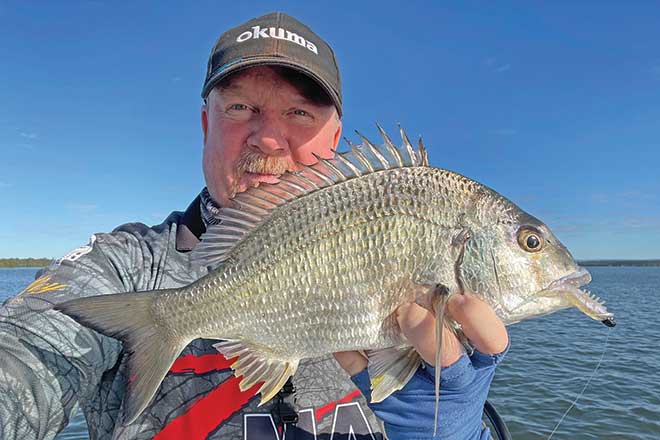I am a big believer in many of the old fishing sayings, such as ‘find the bait, find the fish’, ‘match the hatch’ and ‘think like a fish’ and, when the bite has been tough, it’s reflecting on these sayings and what I can take from them that has turned my sessions around.
In this article I wanted to reference another of these sayings and break down how it has turned a few sessions around for me recently, including the how and where, along with a couple of my go-to lures.
The saying that I am referring to is ‘everything eats a prawn’ and it’s so true.
Many anglers would have caught their first fish on a prawn and a packet of prawns from the service station would have accounted for most target species in the fresh and the salt.
It has always amazed me how many trophy captures have fallen to a dirty old prawn that turned black from being left in the sun.
And yet, the fish still eat it.
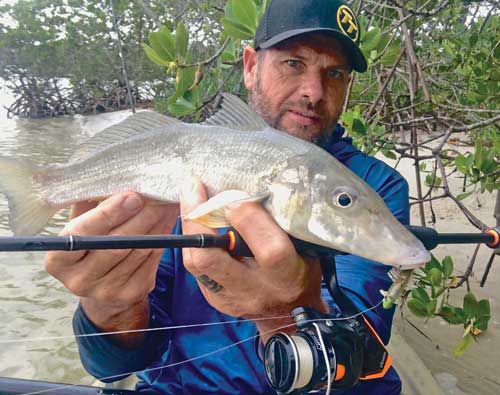
There’s no denying that prawns are tasty, they’re likely to also be a much easier target for predators than a baitfish that can travel faster over a greater distance.
It’s common to have fish cough up prawns on capture or to find a large prawn inside a fish when filleting.
Prawns are still a popular bait option, however we now have access to some realistic and durable prawn imitations that can effectively out fish the real thing, especially without wading through the many smaller fish and vermin that also love to eat a prawn.
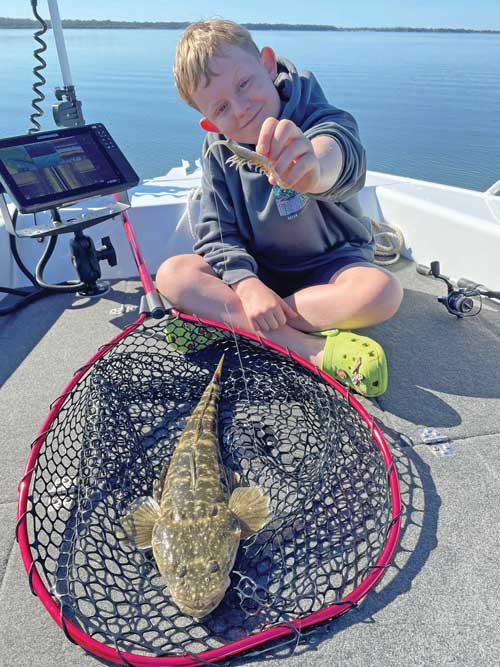
These prawn lures can also be stowed easily in your tackle bag or watercraft and are ready to go should the opportunity arise to fish them.
So, that’s the why we fish prawns – because fish love to eat them.
But when is the right time to fish them?
Without doubt, my go-to plastics are paddle tails – they allow me to fish fast, cover plenty of water and fish also love to eat a baitfish.
So, why are we talking about prawns then… well, let’s look at a few recent scenarios where my prawn imitations have dominated the session.
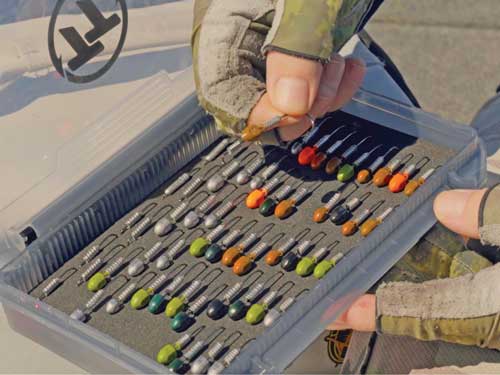
Prawn season
An obvious time to throw a prawn is when prawns are running – you can see them skipping across the surface as fish chase them and they flick out of the water as your lure lands.
This could be a bit of a no-brainer – the fish will often be zoned in on prawns and the bites can be quick and aggressive.
I generally fish prawns slower than other lures, imparting a couple of sharp lifts of the rod tip to get the prawn kicking up before allowing it to fall slowly back to the bottom or into the strike zone.
This means you’re not covering as much water as you would be when rolling a paddle tail, so when fishing prawn imitations I tend to have a slower and more focused approach, which makes them very effective for targeting structure.
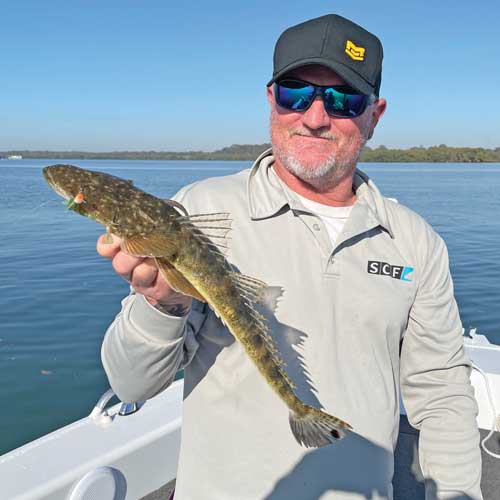
Breaking down structure
During some recent tough bite periods, I have turned to the dominant structure in the system to produce a few fish and it’s the prawn that has attracted the bites.
The slow fall and short kicks of the prawn keep it in the strike zone longer, attract the attention of the fish and stir them up until they eat it.
Key structure where I have fished these lures include mangrove edges, weed edges and drains – all areas where prawns would congregate.
I am slow and methodical when breaking down these key structures, fanning casts to cover the area thoroughly, ensuring that I make casts into any pockets in the weed, breaks or laydowns in the mangrove line and working slowly into the drains from the entry right into the tail of the drain.
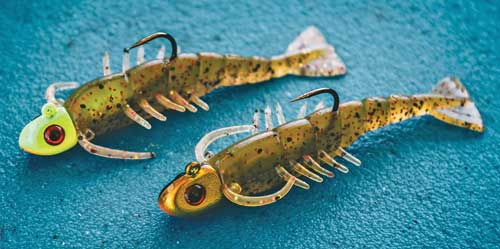
Keep an eye out for current lines, where water is flowing over the edges of flats and weed, as this can be another area that holds prawns and where fish wait in ambush.
Fish will eat a prawn in super shallow water – I’ve fished them from almost no water to about 3m on the edges and in deeper drains.
The bites commonly come on the pause, as the prawn is falling back to the bottom, though I’ve had some aggressive takes throughout the retrieve, so be ready for a brutal strike as they eat the realistic prawn imitation or that subtle tick on the line as it sinks.
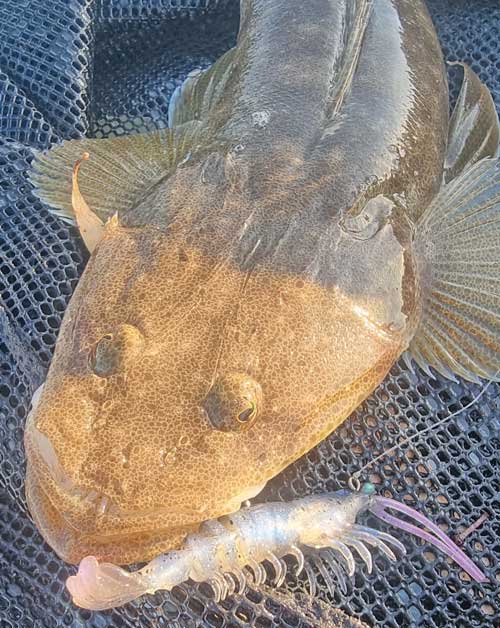
Neap tides
Another saying we anglers commonly use is ‘no run, no fun’, and it’s normal that when there’s little flow, the fish often seem lazy and don’t want to eat.
Without the need to battle the flow they seem to use less energy, require less food and have more time to eat passing bait, so their feeding seems less urgent and less aggressive.
This is not true of all species and scenarios, however there are times in the areas that I fish when the small high tides and high lows see the fish spread out and more passive.
Enter the prawn imitation – then the fish can’t seem to help themselves.
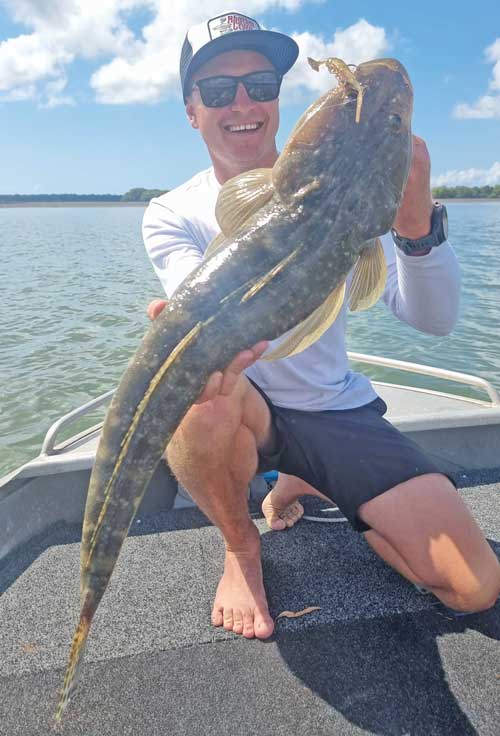
As always, it’s important to look for areas that offer structure and bait, then it’s time to put the prawn to work.
If, like me, you’re a run and gun angler who fishes fast, you consciously need to slow down, in keeping with the water flow and fish.
Reduce the target area from a large flat or channel to a weed edge, mangrove edge or drain and pick it to pieces.
As always, fan casts to cover water, and mix up your retrieve, including some long pauses with the prawn just resting on the bottom for a few seconds longer than you normally would.
Yes, just leave it there, count to three once it hits the bottom, if it helps, then give it a couple of flicks.
If I’m fishing super shallow then I’ll keep the hops smaller or the rod tip lower so the prawn doesn’t blow out of the water then, as it gets deeper, you can make your flicks longer and more aggressive if required.
I’ve seen fish follow the prawn for some distance and even have a few swipes at it before it finally becomes too much and they commit to eating it, so be patient.
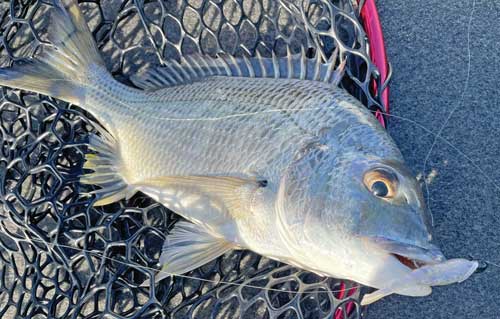
Two favourite prawn imitations
Over the years, I have fished a stack of prawn lures, some are still around and some have disappeared into fishing history, and I’ve settled on a couple of favourites.
One is a river and estuary all-rounder and the other I use primarily to target flathead and larger predatory species.
Let’s look at the two in more detail.
This little 10X Tough prawn imitation has everything you want in a prawn, including a realistic profile, lifelike tail kick and that slow glide and fall that gets fish to commit.
It’s a bite-sized snack, so I fish it when I’m hedging my bets in terms of species, especially when bream are in the mix, having caught an incredible mix of species on this prawn – from whiting, bream and flathead, to grunter, trevally and snapper.
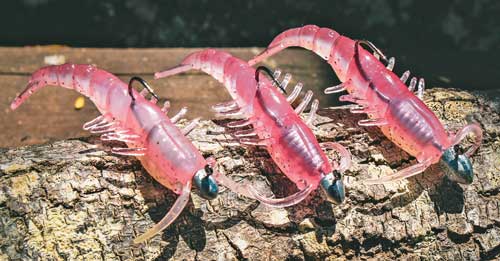
When I’m fishing it fast across the flats or slow in deeper drains and on deeper edges, I rig it on a 1/4oz 1/0 TT HeadlockZ Finesse or DemonZ jig head.
For more finesse applications, tough bites and slow fishing the shallows, I rig it on a 1/8oz 1/0 TT HeadlockZ Finesse jig head.
If you fish canals, areas with little flow and extremely finicky feeders, then you can drop it right down to your favourite TT Hidden Weight System jig head or the 1/20oz, 1/16oz or 1/12oz that you generally fish, giving it more time on the fall and more time in the strike zone.
This little prawn can also be rigged weedless on a TT NedlockZ EWG jig head, or a ChinlockZ or SnakelockZ Finesse in a size 2, if you really wanted to put it into some gnarly structure, through weed and timber.
A few colour favourites include Opening Night in clear water, Blood Oil in dirty water, Houdini as a great all-rounder and the new Yabbie colour has produced some great fish.
When fishing slower, scent becomes even more important, with Pro-Cure Super Gel in Shrimp or Saltwater Yabby/Nipper helping to sell your presentation.
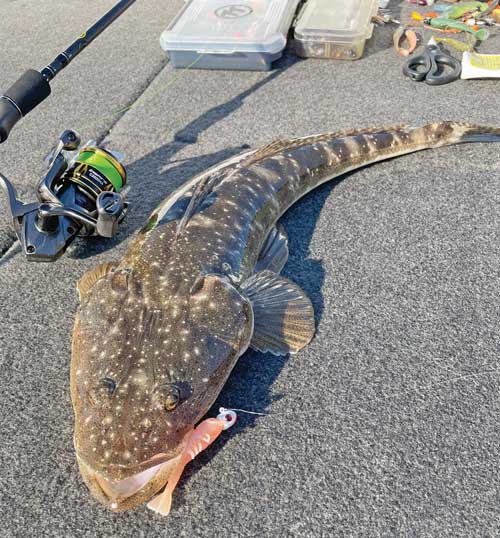
I’m often 50/50 on pre-rigged soft plastics, due to the quality of the hook and the amount of weight used, however the Z-Man pre-rigged stuff has always been ready to go straight out of the packet.
This pre-rigged prawn imitation was released at AFTA 2024 in August and it has blown me away, to the point that it is now in my top three flathead lures, alongside the 2.5” Slim SwimZ and 3” MinnowZ.
The profile is spot on, the lifelike tail kick is deadly and the leg and antennae vibrations on the slow sink need to be seen to be believed.
The 3.5” PrawnZ Elite is built on a strong quality hook, has a glass rattle for added attraction and the internal weight is almost 1/4oz, which is perfect for flathead in the shallows and on the edges.
When I took it out of the packet, I thought it might be a little large and then I proceeded to catch a stack of flathead from 30cm through to quality fish.
Even a 30cm flathead can inhale it so that only the antennae are poking out of its mouth.
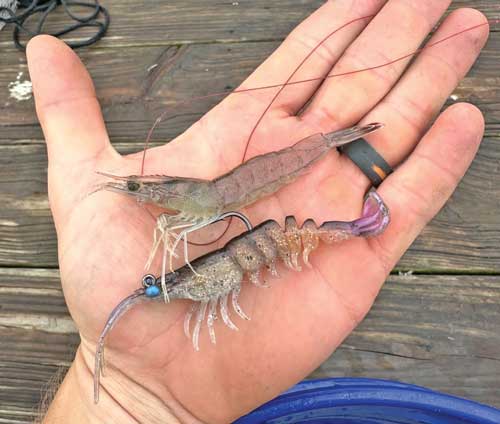
I fish it with two hops and a pause, casting into the edges, shallows and pockets and working it back out.
It’s simple to fish, looks awesome and fish just eat it.
So far, I’ve only fished it half a dozen times for flathead, but it’s blown me away, especially when the bite is tough.
I’ve heard similar from anglers chasing mangrove jack, barramundi, mulloway and even spangled emperor and coral trout on the reef flats, so I can’t wait to throw it for some other species.
There’s also a 5” model available, with a 1/2oz internal weight for anglers chasing a larger profile.
Everything eats a prawn
Prawn imitations are an effective option in many scenarios and these are only a few examples.
If you find you’ve been struggling to get the bites during those shut-down sessions, tie on one of my favourite prawn profiles and give it a swim… it may unlock the bite you’re looking for.
Remember to be patient, mix up the retrieve to imitate a prawn and be ready for that subtle tick as a fish inhales the prawn… or your line takes off as a fish grabs it and races off.
Who knows what might be on the other end… everything eats a prawn.
See you on the water.
 Bush ‘n Beach Fishing Magazine Location reports & tips for fishing, boating, camping, kayaking, 4WDing in Queensland and Northern NSW
Bush ‘n Beach Fishing Magazine Location reports & tips for fishing, boating, camping, kayaking, 4WDing in Queensland and Northern NSW

